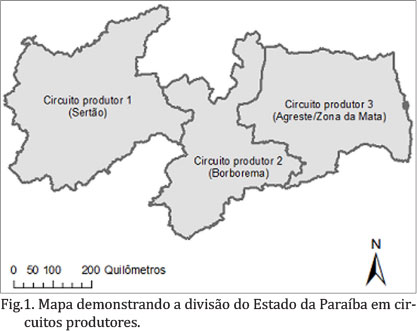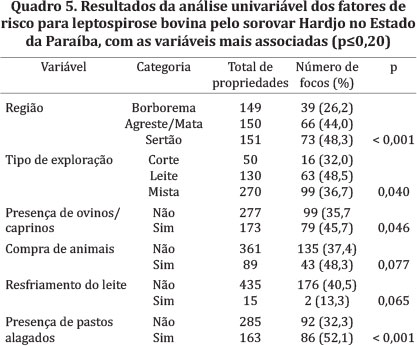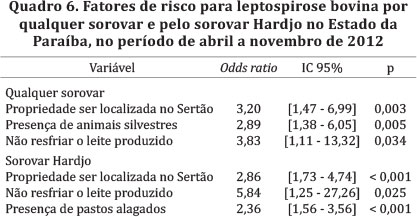Herd-level and animal-level prevalences were determined and risk factors associated with leptospirosis were identified in cows in the State of Paraíba, Northeastern Brazil. A total of 2,317 cows with ≥ 24 months of age from 450 herds were randomly sampled. For the serological diagnosis of Leptospira spp. infection, the microscopic agglutination test (MAT) was carried out using 24 serovars as antigens. A herd was considered positive when presented at least one seropositive animal. Of the 450 investigated herds, 398 (89.7%; 95% CI = 86.6-92.2%) presented at least one reactant animal at MAT to any serovar, and 1,349 (61.1%; 95% CI = 56.6-65.4%) animals were seropositive. Serovar Hardjo was the most prevalent in herds and animals, with frequencies of 58.17% and 54.69% respectively. Location of the herd in the Sertão (odds ratio = 3.20; p=0.003), presence of wildlife (odds ratio =2.89; p=0.005), not cooling milk (odds ratio =3.83; p=0.034) and presence of flooded pastures (odds ratio =2.36; p<0.001) were identified as risk factors for herd-level prevalence. It is concluded that leptospirosis is widely spread in cattle in State of Paraíba, which reinforces the need for increased prevention and control measures, such as vaccination of herds. According to the results of risk factors analysis it is suggested that the sanitary control before the introduction of animals, drainage of wetlands and improvement in management conditions are important measures to preventing the infection.
Leptospira spp.; leptospirosis; cattle; epidemiology; control; Northeastern Brazil









